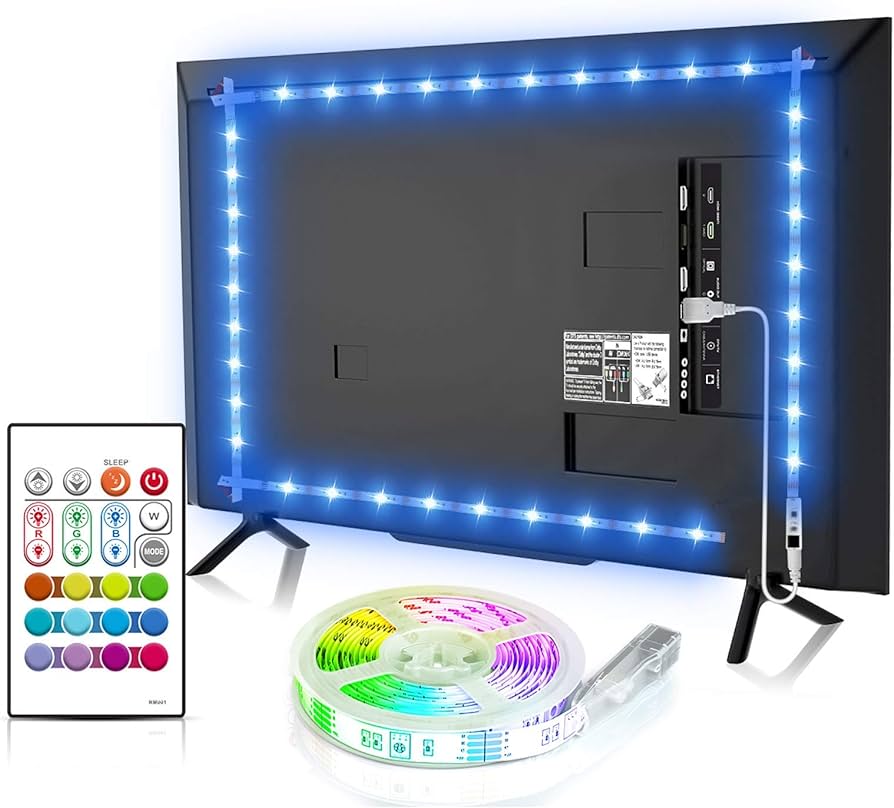Zavedenie Backlight on TV
Backlight is an essential element in contemporary television sets, crucial for delivering clear and vibrant images. This component provides the illumination for the LCD or OLED panel, allowing us to enjoy videos and pictures with optimal brightness, even in well-lit rooms. In this article, we’ll delve into the concept of backlight, its operation, and its significance for TV performance.

What is Backlight on TV?
Definition of Podsvietenie
Backlight refers to the light source positioned behind the LCD or OLED panel, which is integral to displaying images and videos. Its name derives from its placement, as it illuminates the panel from the rear. Typically, backlights consist of LEDs (light-emitting diodes) or CCFLs (cold cathode fluorescent lamps), arranged in a grid formation behind the screen.
Function of Backlight on TV
The TV’s internal electronics control the backlight, adjusting its brightness and intensity to suit the displayed content. This adjustment is achieved through a process known as local dimming, which enables the TV to selectively dim or brighten specific backlight areas, thereby enhancing contrast and picture quality.
Importance of Local Dimming
Enhanced Image Quality
Local dimming is a vital feature in many modern televisions. By selectively dimming parts of the backlight, TVs can produce deeper blacks and brighter whites, enhancing contrast and creating more vivid and lifelike images. This capability is especially critical for HDR (high dynamic range) content, which demands a broader range of brightness and contrast to showcase the full spectrum of colors and details.
Role in HDR Content
The ability to manage backlight precisely is crucial for HDR content. HDR requires a wider range of brightness and contrast to accurately render the vast array of colors and intricate details present in high-quality media, making local dimming an indispensable tool for optimal viewing experiences.
Impact on Color Accuracy
Quality of White Light
Backlight also significantly influences color accuracy. It produces the white light necessary for generating other colors on the screen. Therefore, the backlight’s quality can profoundly affect the TV’s overall color accuracy and saturation. Advanced backlight technologies, such as quantum dots or wide color gamut (WCG) panels, help produce more precise and vibrant colors.
Advanced Technologies of Backlight on TV
High-quality backlights often incorporate sophisticated technologies to enhance color accuracy. Quantum dots and WCG panels are examples of these advancements, offering superior color performance by improving the purity and range of colors displayed on the screen.
Energy Efficiency Considerations
LED vs. CCFL Backlights
Energy efficiency is another important aspect of backlight technology. LED backlights are generally more energy-efficient than their CCFL counterparts, requiring less power to achieve the same light output. LEDs convert electrical energy into light more efficiently, reducing the overall power consumption of the TV.
Benefits of LED Backlights
The efficiency of LED backlights translates to lower energy costs and a reduced environmental impact. Their ability to provide high-quality illumination with less power makes them the preferred choice in modern television manufacturing.
Design and Aesthetics of Backlight on TV
Influence on TV Design
Backlight also affects the design and aesthetics of TVs. LED backlights are thin and flexible, allowing for slimmer and more elegant television designs. This characteristic is particularly advantageous for wall-mounted TVs, where a thin profile and lightweight construction are desirable.
Seamless Integration
Moreover, LED backlights can be seamlessly integrated into the TV’s frame or stand, contributing to a more cohesive and visually appealing design. This integration supports the creation of sleek, modern television sets that enhance the overall viewing environment.
Conclusion of Backlight on TV
Backlight is a fundamental component of modern televisions, providing the illumination necessary for vibrant and clear images. Its quality affects picture clarity, color accuracy, energy efficiency, and the TV’s overall design. Understanding the role of backlight helps consumers make informed choices when purchasing new TVs and appreciate the sophisticated technology behind the stunning visuals we enjoy daily.
Backlight on TV: FAQ
1.What is backlight on TV?
The backlight is the light source located behind the LCD or OLED panel of a TV. It illuminates the screen, allowing images and videos to be visible.
2.How does backlight on TV work?
Backlights typically use LEDs (light-emitting diodes) or CCFLs (cold cathode fluorescent lamps) arranged in a grid. The TV’s internal electronics control the brightness and intensity of the backlight to match the displayed content, often using a process called local dimming.
3.What is local dimming?
Local dimming is a feature that adjusts the brightness of specific areas of the backlight to enhance contrast and picture quality. It allows TVs to display deeper blacks and brighter whites, improving overall image accuracy and detail.
4.Why is local dimming important?
Local dimming is crucial for producing accurate and detailed images, especially for HDR (high dynamic range) content. It helps to achieve a wider range of brightness and contrast, necessary for displaying a full spectrum of colors and intricate details.
5.How does backlight on TV affect color accuracy?
The backlight produces the white light used to create other colors on the screen. High-quality backlights, using technologies like quantum dots or wide color gamut (WCG) panels, provide more accurate and vibrant colors.
6.What is the difference between LED and CCFL backlights in terms of energy efficiency?
LED backlights are generally more energy-efficient than CCFL backlights. LEDs convert electrical energy into light more efficiently, requiring less power and reducing overall energy consumption.
7.How does the backlight influence TV design and aesthetics?
LED backlights are thin and flexible, allowing for slimmer and more elegant TV designs. This is beneficial for wall-mounted TVs and supports seamless integration into the TV’s frame or stand for a more cohesive look.
8.Why is the backlight on TV crucial for performance?
The backlight on TV is essential for providing the illumination needed for clear and vibrant images. Its quality impacts picture clarity, color accuracy, energy efficiency, and the overall design of the TV.
Understanding these aspects of backlight technology helps in making informed decisions when purchasing a new TV and appreciating the sophisticated technology behind modern displays.
